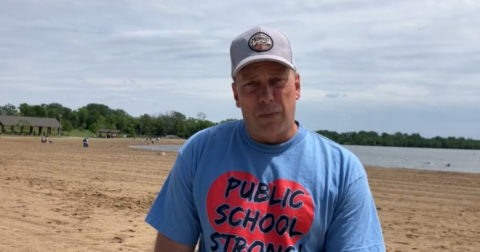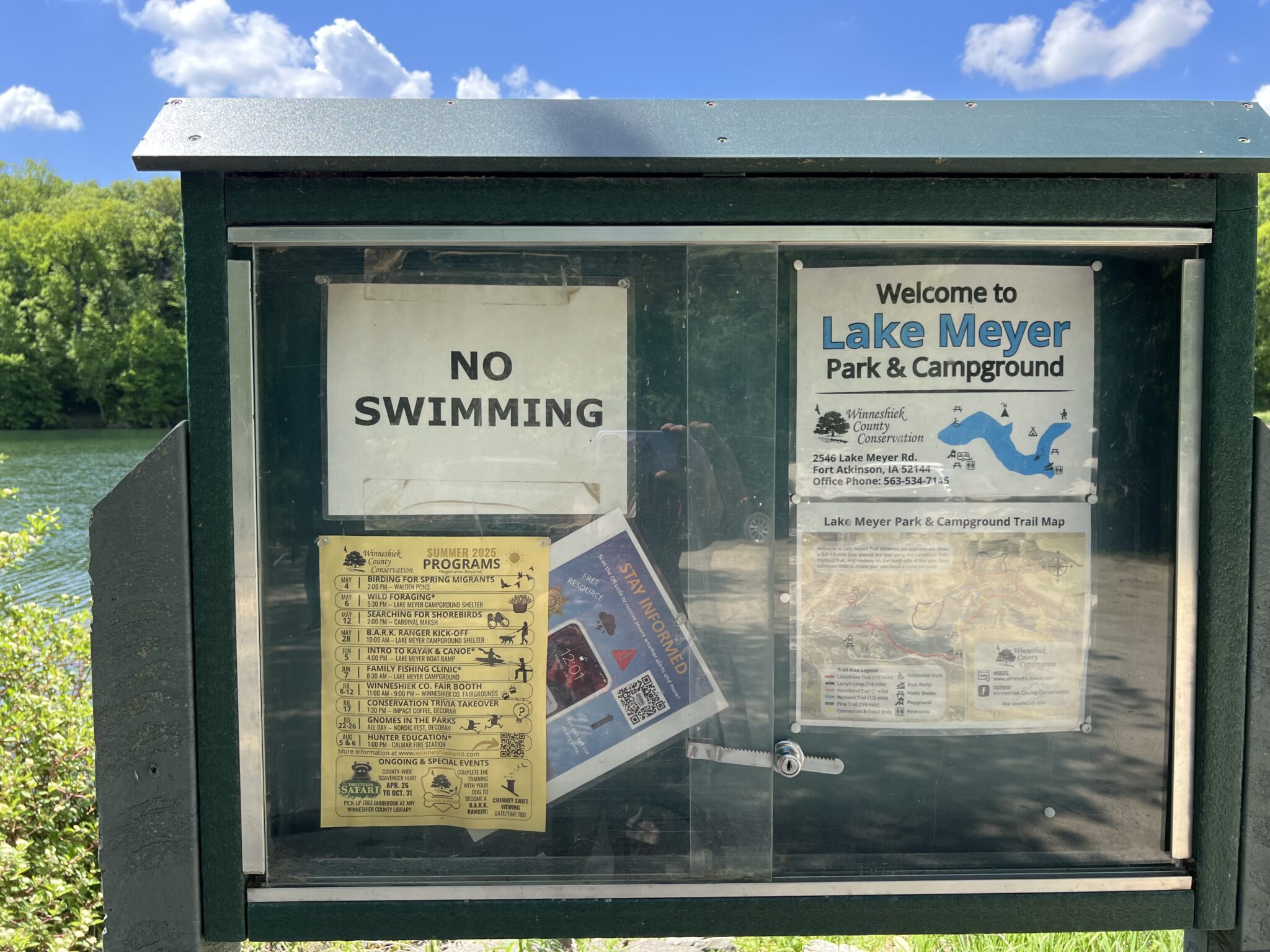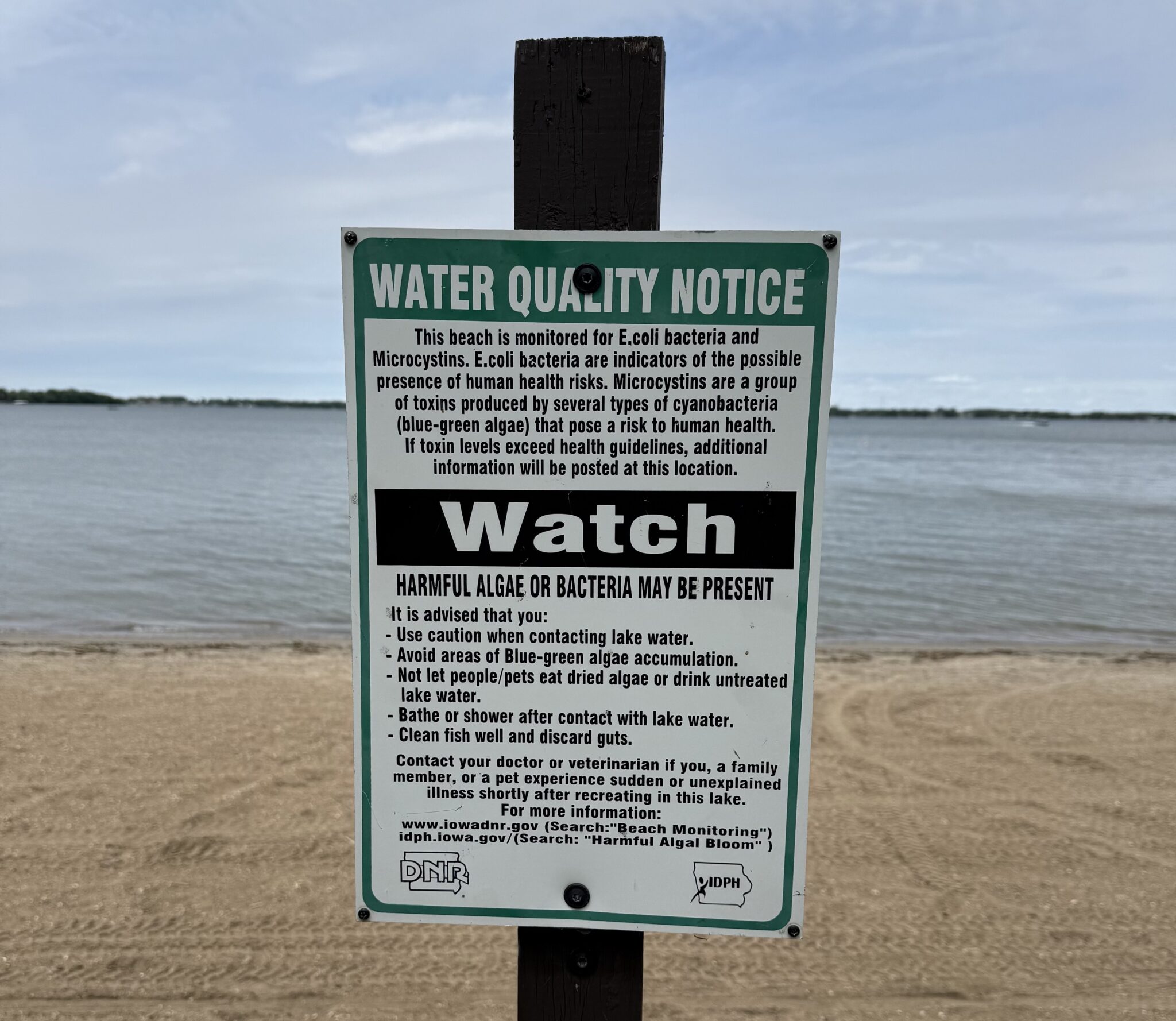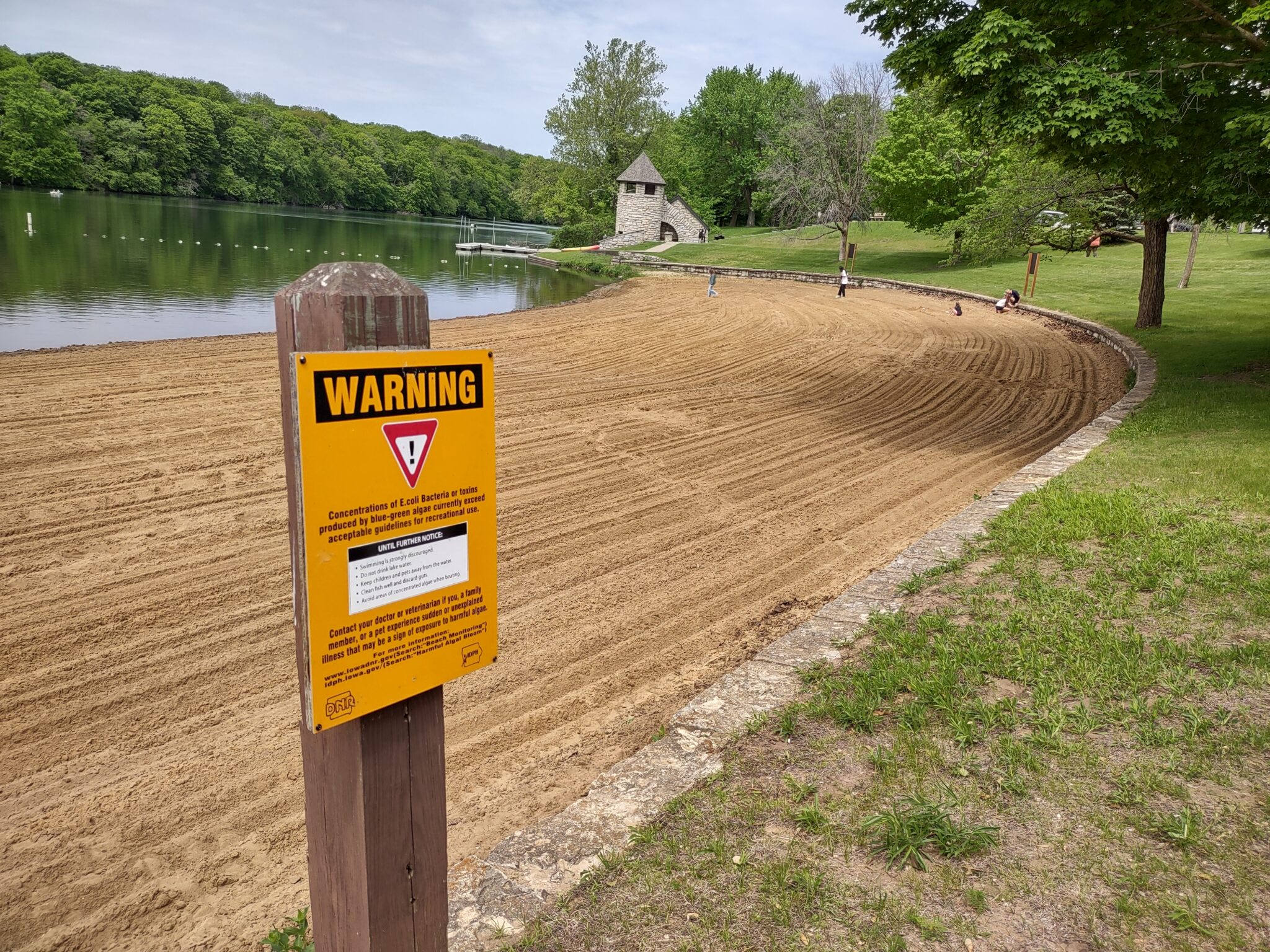Is New York City Getting its Composting Program Right?
Climate•10 min read
Solutions
Through stories, memories and community engagement, a new grassroots effort is building public support for restoring the state’s polluted lakes.


Words by Nina B. Elkadi
How can you create nostalgia for a world some have never seen? In Iowa, a group of non-profits has come together to do just this. The 48 Lakes Initiative encourages volunteers to tell stories of their memories with 48 of Iowa’s lakes — recalling a time when these crucial waterways were the center of social life and collective memory. Today, lakes in many parts of the state are now too polluted for safe use.
Kim Hagemann moved to Iowa in the late 1980s, and even then, she was shocked by the extent of the pollution in waterways.
“Right away it became pretty depressing. Park after park was like a ghost town,” she tells Sentient. “We kind of quit going to the county parks and the state parks, because it was just so depressing. It was really obvious that recreating probably wasn’t a pleasant thing to do in the water.”
The Clean Water Act deadline to make all waters “fishable and swimmable” was 1983. Yet in a 1988 National Water Quality Inventory Report to Congress, the EPA wrote that the most common source of pollution affecting lakes was agriculture, at the time “affecting 58 percent of impaired lake acres.” Four decades after the Clean Water Act deadline, 93 percent of Iowa waterways are considered impaired.

In Iowa, animals in factory farms produce approximately 109 billion pounds of manure, more than any other state in the country. Thanks to manure spills and overapplication of fertilizer, much of it now ends up in the water. Some of the most common water pollutants include nitrates, which are a result of fertilizer and manure pollution, E. coli, a bacteria commonly found in feces, and ammonia, a chemical found in manure and fertilizers.
During Memorial Day weekend, Hagemann spent time speaking with people on the beach of Big Creek Lake about water quality issues in the state. She was volunteering with the 48 Lakes Initiative, a partnership between Driftless Water Defenders, Progress Iowa, Iowa Citizens for Community Improvement and Food & Water Watch, all non-profit advocacy groups. Hagemann says she was there to “spread awareness of Iowa’s diminishing water quality.”

While at the lake, a young man came up to speak with her, asking what she was doing. She was surprised to hear that he was quite knowledgeable about water pollution. “He said that his mom always checks online to see if E. coli counts are high or if there’s other toxic problems with Big Creek before they set out.”
Only three out of the approximately 39 state park beaches monitored by the Iowa Department of Natural Resources (this number fluctuates depending on the year) have not had an E. coli advisory in the past decade.
The state of Iowa was once a mixture of prairie, wetlands, savannas and forests. Today, the landscape is over 85 percent farmland. The value of having outdoor spaces to recreate in a state now dominated by agriculture is clear: A 1988 Iowa Open Spaces Plan noted that “nearly all Iowans (almost 90 percent) visit open spaces in the state with the most popular areas being those associated with water.”
Generations ago, these lakes were the “center of social engagement,” says Driftless Water Defenders legal counsel Jim Larew.
“Part of our mission is to re-establish ties between Iowans and their water,” Larew says. He explains that the agricultural industry has now broken those ties, and that residents deserve something better. “They have the right to access clean water, and clean water access in a recreational way is also an important part of the social dimensions of what Iowa formerly was.”
Around 65 percent of the lakes in Iowa are human-made and taxpayer-funded — only 34 lakes in Iowa are naturally occurring. The 48 Lakes Initiative aims to advocate for an Iowa where the lakes are swimmable, and a place for residents to create memories with future generations.
Chris Jones, water quality expert and president of Driftless Water Defenders, tells Sentient that while agriculture is not the only problem in Iowa, it is a major contributor to water impairment.

“If we cleaned up all of agriculture, our water would be better. If we cleaned up everything else and not agriculture, it would not be better,” he says. Non-point source pollution, like agriculture, comprises 90 percent of the pollution in Iowa waterways. Point source pollution, like wastewater treatment plants and industrial discharges, make up the rest. “Guess which one of those we’re taking a regulatory approach on?”
Iowa taxpayers pay for these lakes, and in most cases, are now paying for their clean-up, too, Jones says.“It’s this revolving door of, we pay for them, they get ruined. We pay to fix them, they get ruined again. We come back in, we pay to fix them again, they get ruined again.”
Sixty-five years ago, Larew was a kid jumping out of a hot car to find relief in the cold water of an Iowa lake, Lake Okoboji.
“To see your own feet and then to put one’s head into the cold water of a lake, all of those feelings are so visceral that I can remember the experience of 65 years ago as if it were yesterday,” Larew says. “My own grandchildren won’t have that experience.”
For young people, Larew says, the problem of climate change can feel so overwhelming that individual change may not seem consequential. The 48 Lake Initiative is trying to change that. People can volunteer by measuring pollution in water, posting up at the lake and interacting with their community members and sharing their stories on social media.
“This water project is a finite way that people actually can make a difference. They can measure the pollution and water. They can go. They can be visible. And I have confidence that at some point there will be this connection between generations,” he says.
The mission of Driftless Water Defenders is to educate, advocate and litigate, Jones says. When it comes to the 48 Lakes Initiative, this means educating people about the conditions of their lakes, advocating that they become better and litigating if the opportunity is right.
“We shouldn’t have to pay for something that somebody else is polluting,” Hagemann says. She worries about nitrates in water and the high cancer rates in Iowa, and believes the state government is not doing enough.
In previous Sentient reporting on Iowa’s cancer crisis, Iowa Cancer Registry director and principal investigator Mary Charlton responded to similar concerns citizens and experts have shared by telling Sentient that the state has various initiatives to explore the connection between cancer and agriculture. In April, The Harkin Institute at Drake University and the Iowa Environmental Council announced an initiative to explore the cancer-agriculture link, similarly citing a gap in research attention to the subject.
For this story, multiple calls to the Iowa Governor’s office asking for comment went unanswered.
“I cannot believe how far we are going into this concept that people are able to pollute and not worry about climate change, and we’re just going to keep plunging forward, because profit is more important than people and our environment,” Hagemann says. For her son, and for the future of her state, Hagemann is doing what she can. “I always thought that at a minimum, we would leave the world better than what we got it.”
This initiative will run throughout the summer. Residents looking to engage with the 48 Lakes Initiative can sign-up to volunteer at one of the lakes.